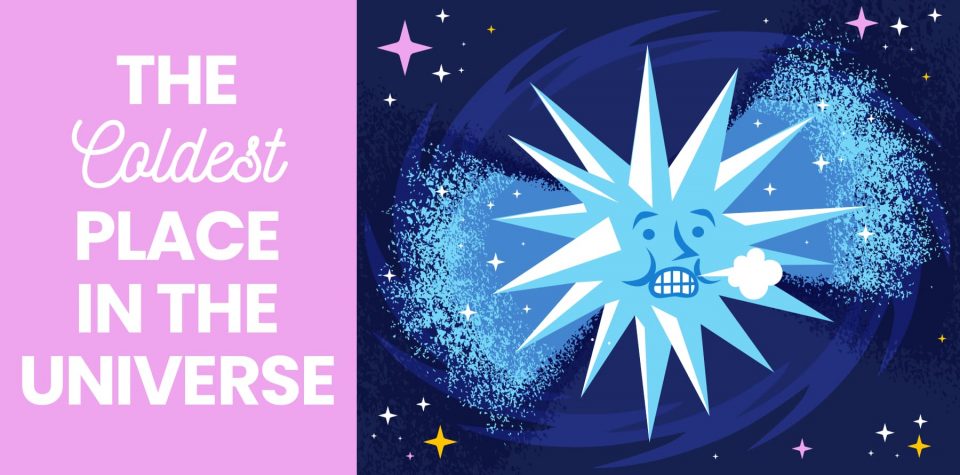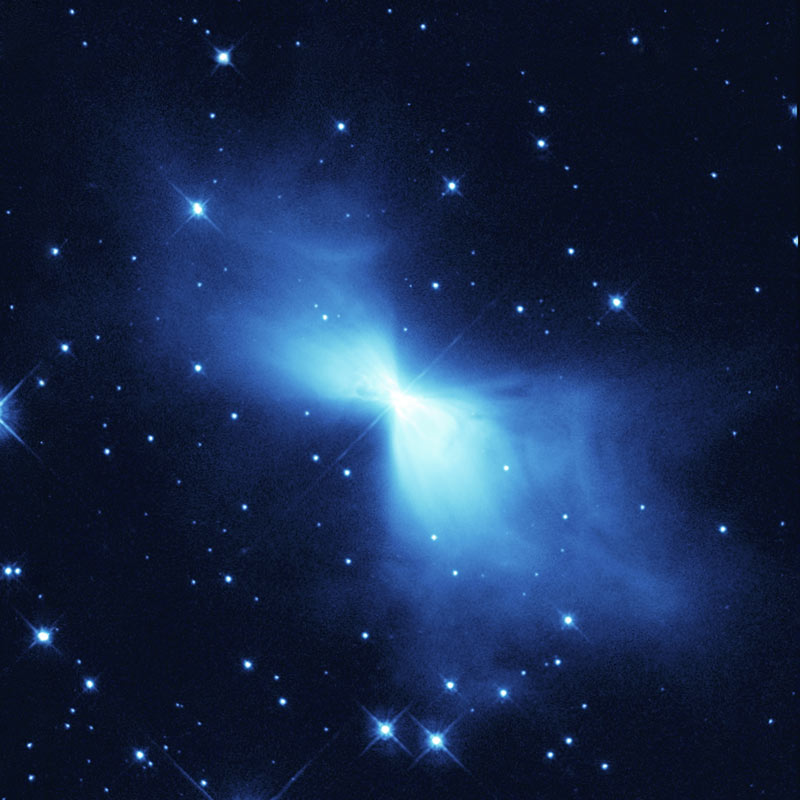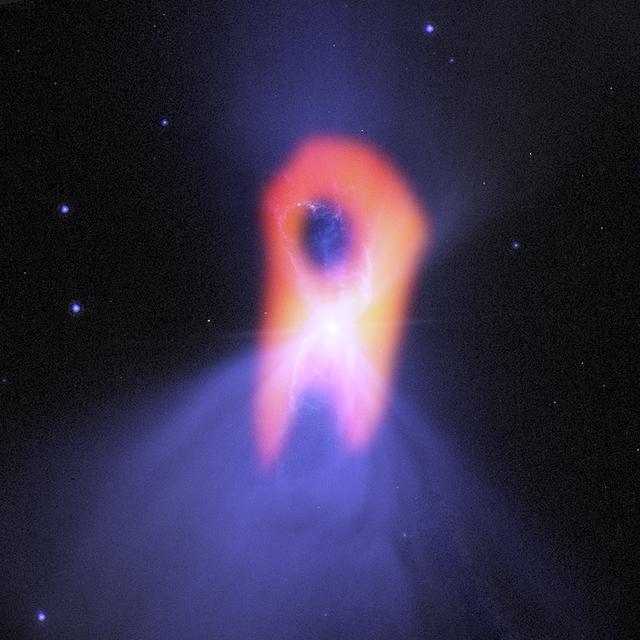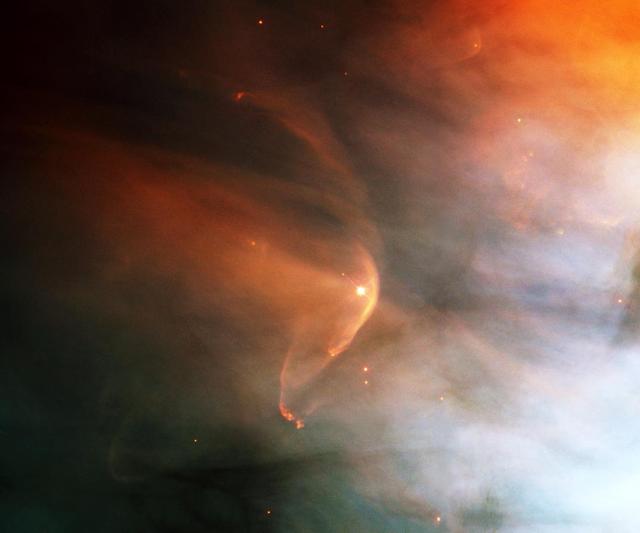
The Coldest Place in the Universe
Kids thinking they might someday navigate deep space need to know what they’re up against, including some pretty intense temperatures. For example, the coldest place in the universe, the Boomerang Nebula, is almost as cold as it’s possible to get. The nebula’s temperature is one degree Kelvin, or -458 degrees Fahrenheit. That’s so cold the nebula actually absorbs heat from deep space, which is very cold itself!
On Earth, scientists have to work really hard to cool something down to one degree Kelvin or lower, and when they do, they learn all kinds of wild things about how the universe works. At zero degrees Kelvin, for instance, matter has no heat energy left at all!
Nebulas are famous for their beauty and for being where stars are born, but not for being among the coldest things in existence. The temperature of the Orion Nebula is around 10,000 degrees Kelvin—even hotter than the surface of the Sun! So what makes the Boomerang Nebula so cold?
The Boomerang Nebula
The Boomerang Nebula is a very young planetary nebula. It’s so young, in fact, that some astronomers call it a preplanetary nebula—it hasn’t achieved its final shape yet. Unlike other types of nebulas, where enormous clouds of interstellar gas condense into new stars that give off lots of light and heat, planetary nebulas are created when a star dies and layers of its gas are blown away.
How It Got Its Name
In the first image taken of the Boomerang Nebula, in 1987, it looked like a boomerang (giving it its name). When the Hubble Space Telescope imaged it in 2003, it looked more like a bow tie.

And when scientists from the National Radio Astronomy Observatory (NRAO) looked at it in 2015, they discovered an even more complex shape—one that later made waves on the internet because it looked like a character from a popular video game.

Scientists don’t think the nebula is actually changing that quickly, but each time they’ve looked at it with a more sensitive telescope, they’ve learned something new about its shape.
How It Got So Cold
Because it’s so young, the Boomerang Nebula is expanding very fast. And, in our universe, quickly expanding gas always becomes colder. This principle of physics is at work in refrigerator and air conditioner pumps, and in room-temperature aerosol cans, which will cool off once the spray is released. Scientists think that the force of its expanding gas is what makes the Boomerang Nebula so cold.
According to the NRAO, however, the Boomerang Nebula seems to be warming in some places as it ages, which means that it may not be the coldest place in the universe for long.
The Coldest Lab in the Universe

Some people claim that the coldest place in the universe is actually in a science lab at the University of Bremen in Germany. But it’s more accurate to say it was the coldest place for about two seconds. Researchers there were able to cool gas down to almost zero Kelvin, the coldest it’s physically possible for anything to get, during an experiment. But the experiment didn’t last long.
Other researchers on Earth are regularly able to cool gas below one degree Kelvin as well, but they can’t sustain those temperatures for long either, so the Boomerang Nebula probably still deserves the title of the coldest place in the universe.
How Cold Is Space?
How cold the rest of space is depends on where you are. The Boomerang Nebula is incredibly cold, but the Orion Nebula is very hot in most places. And near stars like the Sun and on the Moon, temperatures in space can change dramatically and rapidly. For example, temperatures on the Moon rise above 240 degrees Fahrenheit when the Sun is shining on it but can plunge below -330 degrees Fahrenheit when it isn’t!
In the Orion Nebula, stars like these heat up gas and make space pretty hot.

Those temperature swings around stars happen because objects in space heat up or cool down very quickly from radiation. It’s the same effect you feel when stepping from the shade into the sunlight here on Earth, but it’s stronger in space because Earth’s atmosphere isn’t there to shield celestial bodies like the Moon from radiation or hold onto heat once the radiation is gone.
The Temperature of Deep Space
In the vast gulfs of space between stars and nebulas, however, scientists think there’s a pretty uniform temperature of 2.7 degrees Kelvin, or -455 degrees Fahrenheit. Isn’t space cool?
